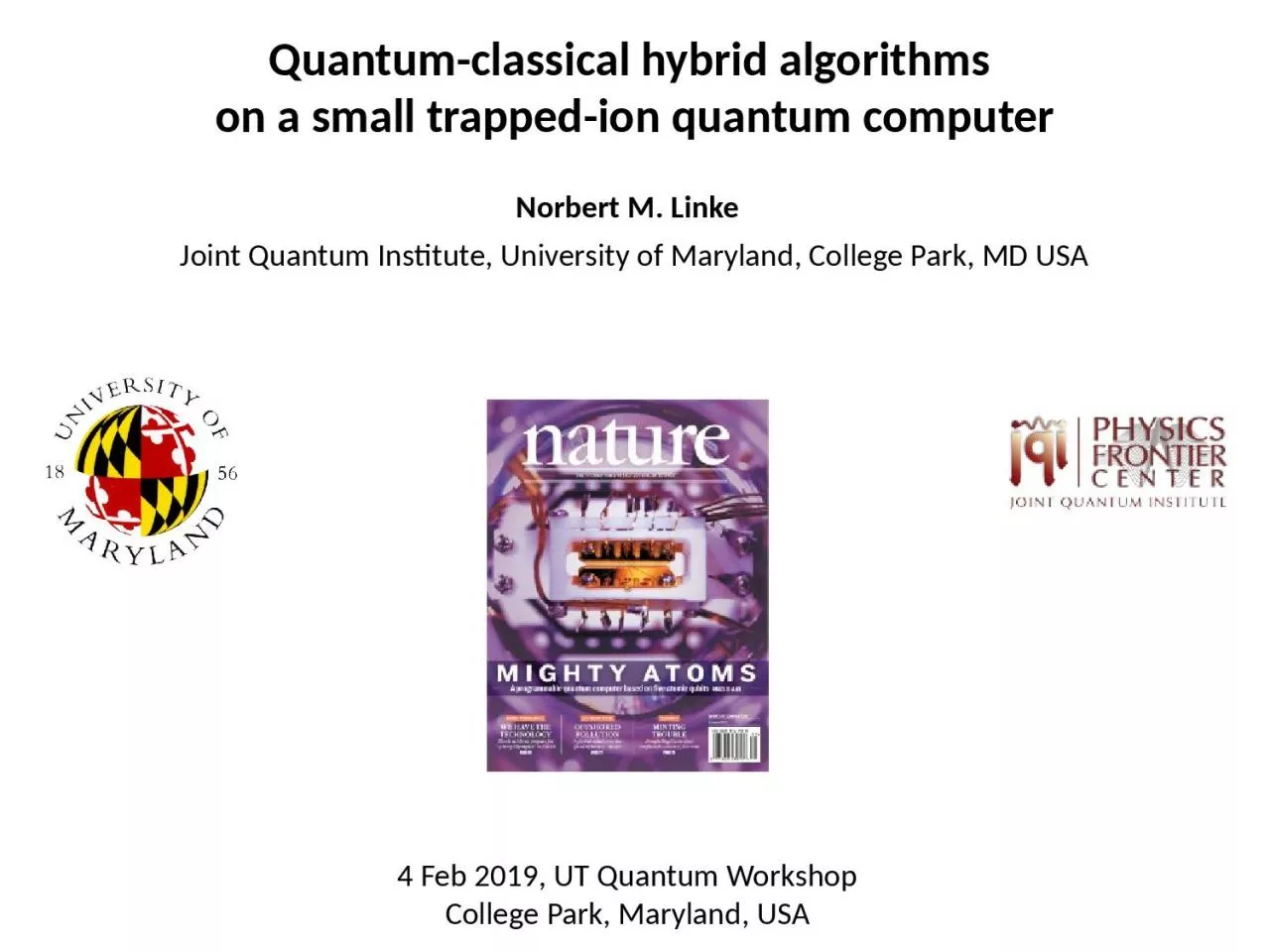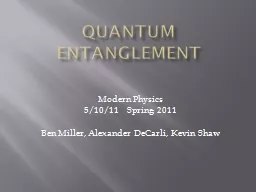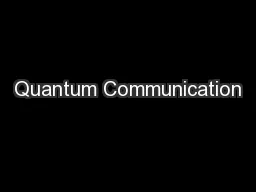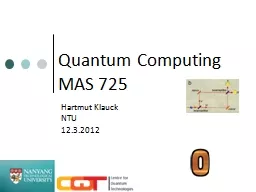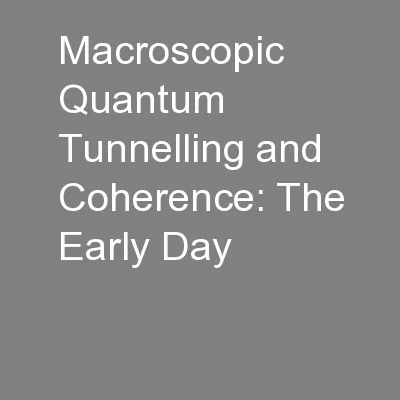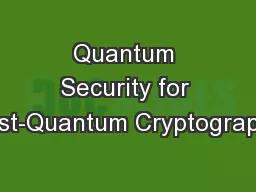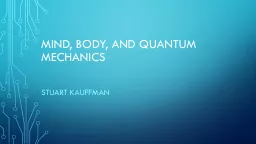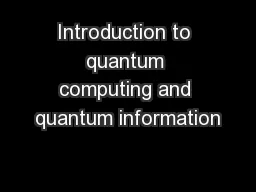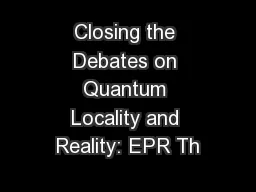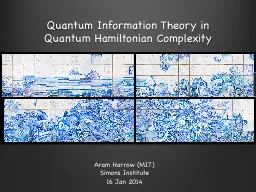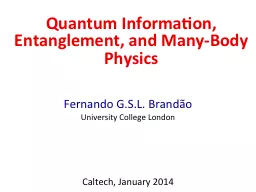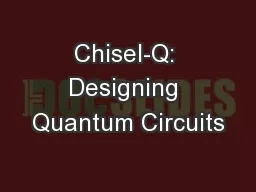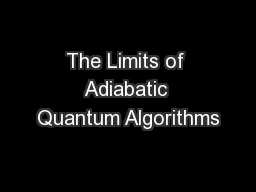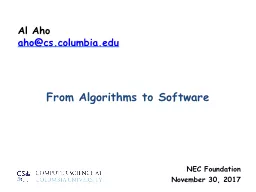PPT-Quantum-classical hybrid algorithms
Author : ximena | Published Date : 2023-10-29
on a small trappedion quantum computer Norbert M Linke Joint Quantum Institute University of Maryland College Park MD USA 4 Feb 2019 UT Quantum Workshop College
Presentation Embed Code
Download Presentation
Download Presentation The PPT/PDF document "Quantum-classical hybrid algorithms" is the property of its rightful owner. Permission is granted to download and print the materials on this website for personal, non-commercial use only, and to display it on your personal computer provided you do not modify the materials and that you retain all copyright notices contained in the materials. By downloading content from our website, you accept the terms of this agreement.
Quantum-classical hybrid algorithms: Transcript
Download Rules Of Document
"Quantum-classical hybrid algorithms"The content belongs to its owner. You may download and print it for personal use, without modification, and keep all copyright notices. By downloading, you agree to these terms.
Related Documents

